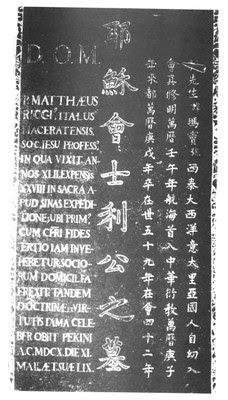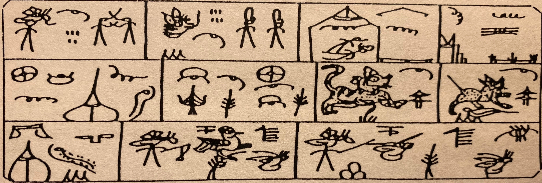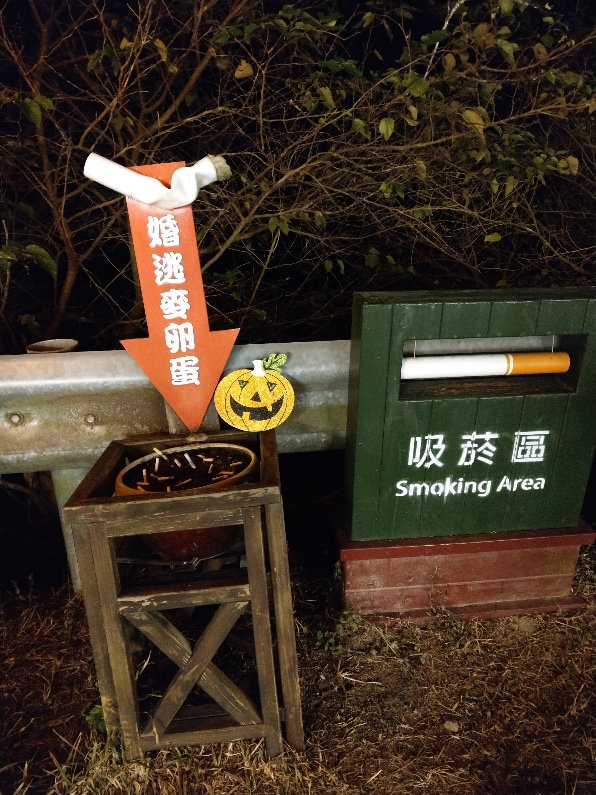Archive for Writing systems
Language is not script and script is not language
Trying to clear up the confusion between the two is a battle we have been waging for decades, and nowhere is the problem more severe than in the study of Sinitic languages and the Sinographic script. The crisis (not a "danger + opportunity"!) has come to the surface again this month with the appearance of a new book by Jing Tsu titled Kingdom of Characters: The Language Revolution That Made China Modern (Riverhead Books, 2022).
The publication of Tsu's book has generated a lot of excitement, publicity, and reviews. Here I would like to call attention to the brief remarks of an anonymous correspondent (a famous, reclusive linguist) that are right on target:
Reimagining "antiquated" Chinese
Reproduced below is the text of a book review in Science that you may not have seen. It is classified as "Linguistics", though the reviewer is a historian at Cal State Poly, Pomona. Notice that Chinese is assumed to be "antiquated" and in need of being "reimagined"! There is simply no sign of Science understanding the difference between a human language and a writing system. This is consistent with the way they have always treated linguistics; they have no idea what the subject really is.
Read the rest of this entry »
Der / dianr ("scram; skedaddle")
One of the first Pekingese colloquialisms I learned (by now I know scores) was taught to me half a century ago by Iris Rulan Chao Pian (1922-2013), daughter of the distinguished linguist, Yuen Ren Chao (1892-1982). It sounded like "der", sometimes with a trill at the end, and meant "scram; skedaddle". Like many authentic Pekingese colloquial expressions, it was impossible to tell for sure how to write it in Sinographs.
Recently, I asked around to see if people of a younger generation (in their 20s and early 30s) knew this expression, what it meant, how to write it, and how to pronounce it. Most of my informants, even those who had grown up in Beijing / Peking, told me that they had never heard it.
Read the rest of this entry »
Parenthetical, alphabetical, ironical commentary in Sinographic texts
Occasionally I see pinyin (spelling) interspersed with Sinographs (usually for phonetic annotation), but this one threw me for a loop:
Yěxǔ (jué duì) shì, gāi lǐngyù zuì qiángdà de jiǎngzhě zhènróng.
也许(jué duì)是,该领域最强大的讲者阵容。
"Perhaps (definitely) it's the case that this is the strongest lineup of speakers in this field.
It occurs about two thirds of the way down in this Chinese article.
Read the rest of this entry »
Language trees and script trees
[The following is a guest post by Jim Unger (J. Marshall Unger), who wrote it in response to my invitation to him to draw up a Stammbaum to show the relationships of the world's scripts.]
The rationale for tree structures in language history is that languages never completely converge. When speakers of two languages come into contact, there are always clues in the resulting language(s) that reveal the identity of the input languages: apart from the effects of contact, languages diverge over time.
In the case of writing, one must first of all distinguish graphic methods per se from writing systems. The adaptation of existing graphic methods that originated in one time and place to a different time, place, and, usually, language, does not, in my opinion, show the spread of a writing system, just the diffusion of a technology. It only makes sense to speak of a writing system with respect to a particular language at a particular time and place. This is a corollary of the fact that every practical and learnable writing system co-extensive with the potential output of a natural language necessarily utilizes a certain amount of phonography with respect to that language (unless the system is contrived expressly for cryptographic purposes). Logography arises because of sound changes that obscure the motivations for some previously phonographic inscriptions, the purposeful suppression of certain phonographic information for the sake of brevity, or, as in the case of Chinese, historical accidents that militated against the adoption of an abjad, abugida, or alphabet.
Read the rest of this entry »
Another multilingual, multiscriptal sign in Taiwan
Mark Swofford sent in this photograph of a clever, curious sign at an automobile repair shop in Taiwan:
Read the rest of this entry »
Phonology and orthography in Ming China
New book from Columbia University Press:
The Culture of Language in Ming China: Sound, Script, and the Redefinition of Boundaries of Knowledge
$35.00 £28.00
Publisher's description:
The scholarly culture of Ming dynasty China (1368–1644) is often seen as prioritizing philosophy over concrete textual study. Nathan Vedal uncovers the preoccupation among Ming thinkers with specialized linguistic learning, a field typically associated with the intellectual revolution of the eighteenth century. He explores the collaboration of Confucian classicists and Buddhist monks, opera librettists and cosmological theorists, who joined forces in the pursuit of a universal theory of language.
Read the rest of this entry »
Matteo Ricci's tombstone
Epigraph on the Tombstone of Matteo Ricci in the Zhalan Cemetery in Beijing:

Inscription on the tomb of Matteo Ricci (1552–1610), black-and-white photograph, unknown photographer; source: with the kind permission of the Ricci Institute, University of San Francisco.
Read the rest of this entry »
Morphemes without Sinographs
Commenting on "Educated (and not so educated) guesses about how to read Sinographs" (11/16/21), Chris Button asked:
I’m curious what you mean by “pseudo explanation”? The expected reflex from Middle Chinese times is xù, but yǔ has become the accepted pronunciation based on people guessing at the pronunciation in more recent times. Isn’t that a reasonable explanation?
To which I replied:
It's such a gigantic can of worms that I'm prompted to write a separate post on this mentality. I'll probably do so within a few days, and it will be called something like "Morphemes without characters".
Stay tuned.
Read the rest of this entry »
"They're not learning how to write characters!"
So exclaimed a graduate student from the PRC. She was decrying the new teaching methods for Mandarin courses in the West that do not emphasize copying characters countless times by hand and taking dictation (tīngxiě 聽寫 / 听写) tests, but rather relying on Pinyin (alphabetical) inputting to write the characters via computers.
These are topics we have discussed numerous times on Language Log (see "Selected readings" below for a sample of some of the posts that touch on this subject. I told the student that this is indeed a fact of life, and that current teaching methods for Mandarin emphasize pronunciation, grammar, vocabulary, sentence structure, etc., and that handwriting the characters is no longer a priority. Whereas in the past handwriting of the characters used to take up over half of a student's learning time, now copying characters is reduced to only a small fraction of that.
Read the rest of this entry »



